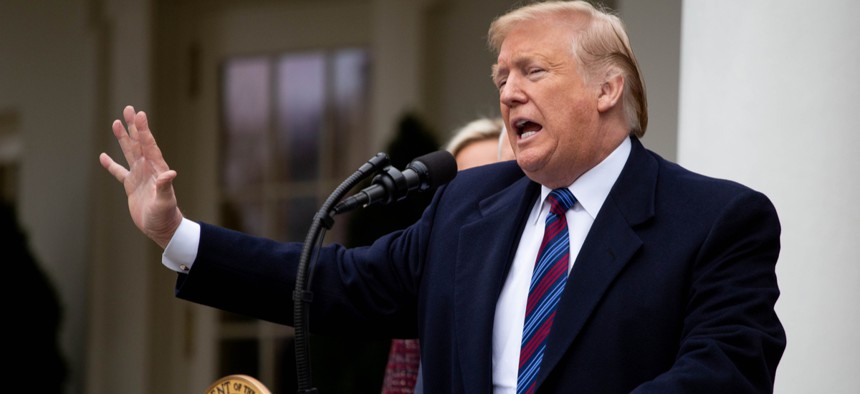Trump Executive Order Directs ‘All Agencies’ to Share Citizenship Data with Commerce Department

Michael Candelori/Shutterstock
The executive order followed President Trump’s Rose Garden remarks Thursday but doesn’t provide many specifics regarding how to move the records.
President Trump backed away from adding the citizenship question to the 2020 Census Thursday afternoon, but in an executive order issued later in the evening, he directed agencies to open their vast databases to the Commerce Department as an alternative means to develop a head-count of citizens.
The order followed remarks Trump made in the Rose Garden demanding “every department and agency” provide the Commerce Department “with all requested records regarding the number of citizens and non-citizens in the country.” Trump's decision not to include the citizenship question on the Census represented an about-face after a string of legal defeats.
“We will utilize these vast federal databases to gain a full, complete, and accurate count of the non-citizen population, including databases maintained by the Department of Homeland Security and the Social Security Administration,” Trump said. “We will leave no stone unturned.”
While the executive order applies to “all agencies,” it specifically highlights a handful of agencies and specific records.
Among them:
- Social Security Administration’s Master Beneficiary records.
- The U.S. Citizenship and Immigration Services’ national-level file of lawful permanent residents and naturalization records.
- Immigration and Customs Enforcement’s F1 and M1 non-immigrant visa records.
- DHS’ national file on customs and border arrival and departure data.
- DHS and State Department’s Worldwide Refugee and Asylum Processing System and visa records
- State Department’s passport records.
- Medicaid and CHIP records from the Department of Health and Human Services.
The executive order also calls for the Census Bureau to establish an interagency working group that will process the data.
However, the order makes no mention of how the data will be shared, distributed, processed or analyzed, or what technologies may be required to transfer petabytes of federal records in various formats.



